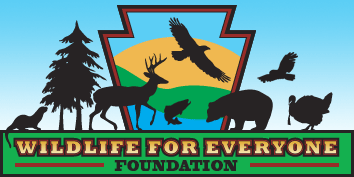Wildlife For Everyone — Protecting Nature, Empowering Communities
A Pennsylvania-based nonprofit dedicated to conserving habitats, inspiring people, and ensuring wildlife thrives for all.
Wildlife For Everyone Foundation works across Pennsylvania to restore natural habitats, support science-based conservation, and engage people—especially youth and communities—in wildlife stewardship.
We believe that a healthy environment and thriving wildlife benefit everyone, and that people of all backgrounds should have access to nature’s beauty and lessons.
What We Do — Key Pillars
1. Habitat Restoration & Protection
We fund and lead projects to restore native forests, wetlands, and riparian (streamside) corridors, reduce invasive species, and strengthen landscape connectivity.
2. Education & Youth Programs
Through programs like Seedlings for Schools and our Pollinator Garden Initiative, we engage students and educators to learn, plant, and steward wildlife habitat across schoolyards and communities.
3. Community Science & Research
We collaborate with local residents, universities, and land managers to collect data, monitor species trends, and inform conservation planning.
4. Outreach & Inclusion
We host workshops, volunteer habitat days, and accessible nature walks, with emphasis on reaching under-served communities, fostering partnerships, and removing barriers to nature participation.
Get Involved / Ways to Help
Volunteer — Join habitat restoration events or assist with educational programming.
Donate — Your support funds restoration, outreach, and wildlife protection.
Partner — Collaborate with us on land, research, schools, or outreach.
Attend Events — Workshops, nature walks, citizen science sessions, and educational talks.
Recent Highlights & Successes
“30,000 trees planted in the past year across 15 counties”
“120 schools participating in the Seedlings for Schools program”
“Citizen scientists contributed over 10,000 observations on pollinators and amphibians”
“Established new partnerships with local conservation districts and Indigenous groups”
